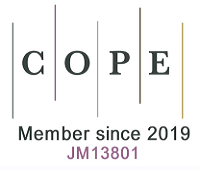REFERENCES
1. Bush JA, Li G. Cancer chemoresistance: The relationship between P53 and multidrug Transporters. Int J Cancer 2002;98:323-30.
2. Wang W, Kryczek I, Dostál L, Lin H, Tan L, et al. Effector T Cells Abrogate Stroma-Mediated Chemoresistance in Ovarian Cancer. Cell 2016;165:1092-105.
3. Prieto-Vila M, Takahashi R, Usuba W, Kohama I, Ochiya T, et al. Drug Resistance Driven by Cancer Stem Cells and Their Niche. Int J Mol Sci 2017;18:pii:E2574.
4. Brasseur K, Gévry N, Asselin E. Chemoresistance and targeted therapies in ovarian and endometrial cancers. Oncotarget 2017;8:4008-42.
6. Jo Y, Choi N, Kim K, Koo HJ, Choi J, et al. Chemoresistance of Cancer Cells: Requirements of Tumor Microenvironment-mimicking In Vitro Models in Anti-Cancer Drug Development. Theranostics 2018;8:5259-75.
7. Phi LTH, Sari IN, Yang YG, Lee SH, Jun NL, et al. Cancer Stem Cells (CSCs) in Drug Resistance and their Therapeutic Implications in Cancer Treatment. Stem Cells Int 2018;2018:5416923.
10. Tomasetti C, Voelstein B, Parmigiani G. Half or more of the somatic mutations in cancers of self-renewing tissues originate prior to tumor initiation. Proc Natl Acad Sci U S A 2013;110:1999-2004.
11. Tomasetti C, Vogelstein B. Variation in cancer risk among tissues can be explained by the number of stem cell divisions. Science 2015;347:78-81.
12. Tomasetti C, Li L, Vogelstein B. Stem cell divisions, somatic mutations, cancer etiology, and cancer prevention. Science 2017;355:1330-4.
13. Nilsson JA, Cleveland JL. Myc pathways provoking cell suicide and cancer. Oncogene 2003;22:9007-21.
14. Miller DM, Thomas SD, Islam A, Muench D, Sedoris K. c-Myc and Cancer Metabolism. Clin Cancer Res 2012;18:5546-53.
15. Chen H, Liu H, Qing G. Targeting oncogenic Myc as a strategy for cancer treatment. Signal Transduct Target Ther 2018;3:5.
16. Campbell PM, Der CJ. Oncogenic Ras and its role in tumor cell invasion and metastasis. Semin Cancer Biol 2004;14:105-14.
17. Pylayeva-Gupta Y, Grabocka E, Bar-Sagi D. RAS oncogenes: weaving a tumorigenic web. Nat Rev Cancer 2011;11:761-74.
18. Fernández-Medarde A, Santos E. Ras in Cancer and Developmental Diseases. Genes Cancer 2011;2:344-58.
19. Toon CW, Chou A, Clarkson A, DeSilva K, Houang MC. Immunohistochemistry for Myc Predicts Survival in Colorectal Cancer. PLoS ONE 2014;9:e87456.
20. Koseki J, Colvin H, Fukusumi T, Nishida N, Konno M, et al. Mathematical analysis predicts imbalanced IDH1/2 expression associates with 2-HG-inactivating β-oxygenation pathway in colorectal cancer. Int J Oncol 2015;46:1181-91.
21. Rivlin N, Brosh R, Oren M, Rotter VN. Mutations in the p53 Tumor Suppressor Gene: Important Milestones at the Various Steps of Tumorigenesis. Genes Cancer 2011;2:466-74.
22. Levine AJ, Oren M. The first 30 years of p53: growing ever more complex. Nat Rev Cancer 2009;9:749-58.
23. Lane D, Levine A. p53 Research: The Past Thirty Years and the Next Thirty Years. Cold Spring Harb. Perspect. Biol 2010;2:a000893.
24. Garritano S, Inga A, Gemignani F, Landi S. More targets, more pathways and more clues for mutant p53. Oncogenesis 2013;2:e54.
25. Macleod KF. The RB tumor suppressor: a gatekeeper to hormone independence in prostate cancer? J Clin Invest 2010;120:4179-82.
26. Oser MG, Fonseca R, Chakraborty AA, Brough R, Spektor AM, et al. Cells Lacking the RB1 Tumor Suppressor Gene Are Hyperdependent on Aurora B Kinase for Survival. Cancer Discov 2019;9:230-47.
27. Vander Heiden MG, Cantley LC, Thompson CB. Thompson, Understanding the Warburg Effect: The Metabolic Requirements of Cell Proliferation. Science 2009;324:1029-33.
29. Gatenby RA, Gillies RG. Why do cancers have high aerobic glycolysis? Nat Rev Cancer 2004;4:891-9.
30. DeBerardinis RJ, Lum JJ, Hatzivassiliou G, Thompson CB. The Biology of Cancer: Metabolic Reprogramming Fuels Cell Growth and Proliferation. Cell Metab 2008;7:11-20.
33. Sonveaux P, Végran F, Schroeder T, Wergin MC, Verrax J, et al. Targeting lactate-fueled respiration selectively kills hypoxic tumor cells in mice. J Clin Invest 2008;118:3930-42.
34. Guppy M, Leedman P, Zu X, Russell V. Contribution by different fuels and metabolic pathways to the total ATP turnover of proliferating MCF-7 breast cancer cells. Biochem J 2002;364:309-15.
35. DeBerardins RJ, Mancuso A, Daikhin E. Beyond aerobic glycolysis: Transformed cells can engage in glutamine metabolism that exceeds the requirement for protein and nucleotide synthesis. Proc Natl Acad Sci U S A 2007;104:19345-50.
36. Miyo M, Konno M, Nishida N, Sueda T, Noguchi KM, Miyo, et al. Metabolic Adaptation to Nutritional Stress in Human Colorectal Cancer. Sci Rep 2016;6:38415.
37. Reitzer LJ, Wice BM, Kennell D. Evidence That Glutamine, Not Sugar, Is the Major Energy Source for Cultured HeLa Cells. J Biol Chem 1979;254:2669-76.
38. Wise DR, DeBerardinis RJ, Mancuso A. Myc regulates a transcriptional program that stimulates mitochondrial glutaminolysis and leads to glutamine addiction. Proc Natl Acad Sci U S A 2008;105:18782-7.
40. Sabharwal SS, Schumacker PT. Mitochondrial ROS in cancer: Initiatiors, amplifiers or an Achilles’ hell? Nat Rev Cancer 2014;14:709-21.
41. Harris IS, Treloar AE, Inoue S, Sasaki M, Gorrini CI, et al. Glutathione and Thioredoxin Antioxidant Pathways Synergize to Drive Cancer Initiation and Progression. Cancer Cell 2015;27:211-22.
42. Schumacker PT. Reactive Oxygen Species in Cancer: A Dance with the Devil Cancer. Cancer Cell 2015;27:156-7.
43. McCubrey JA, Steelman LS, Chappell WH, Abrams SL, Wong EW, et al. Roles of the Raf/MEK/ERK pathway in cell growth, malignant transformation and drug resistance. Biochim Biophys Acta 2007;1773:1263-84.
46. Jaenicke L. Vitamin and coenzyme function: Vitamin B12 and Folic Acid. Annu Rev Biochem 1964;326:287-316.
47. Brown GM. Biogenesis and Metabolism of Folic Acid (Ch 24). In: Greenberg DM, editor. Metabolic Pathways. New York: Vol IV Academic Press; 1970. pp. 383-410.
48. Jabrin S, Ravanel S, Gambonnet B. One-carbon metabolism in plants. Regulation of tetrahydrofolate synthesis during germination and seedling development. Plant Physiol 2003;131:1431-9.
49. Duthie SJ, Narayanan S, Sharp L, Little J, Basten GS, et al. Folate, DNA stability and colo-rectal neoplasia. Proc Nutr Soc 2004;63:571-8.
50. Christensen KE, MacKenzie RE. Mitochondrial one-carbon metabolism is adapted to the specific needs of yeast, plants and mammals. BioEssays 2006;28:595-605.
52. Momb J, Lewandowski JP, Bryant JD, Fitch R, Surman DRJ, et al. Deletion of Mthfd1l causes embryonic lethality and neural tube and craniofacial defects in mice. Proc Natl Acad Sci U S A 2013;110:549-54.
53. Koseki J, Konno M, Asai A, Colvin H, Kawamoto KJ, et al. Enzymes of the one-carbon folate metabolism as anticancer targets predicted by survival rate analysis. Sci Rep 2018;8:303.
54. Asai A, Koseki J, Konno M, Nishimura T, Gotoh N, et al. Drug discovery of anticancer drugs targeting methylenetetrahydrofolate dehydrogenase 2. Heliyon 2018;4:1-17.
55. Flier JS, Mueckler MM, Usher P, Lodish HFJ. Elevated levels of glucose transport and transporter messenger RNA are induced by ras or src oncogenes. Science 1987;235:1492-5.
56. Birnbaum M. J., Haspel H. C., Rosen O. M. Transformation of Rat Fibroblasts by FSV Rapidly Increases Glucose Transporter Gene Transcription. Science 1987;235:1495-8.
58. Bruce WR, Gaag HVD. A Quantitative Assay for the Number of Murine Lymphoma Cells capable of Proliferation in vivo. Nature 1963;199:79-80.
59. Larochelle A, Vormoor J, Hanenberg H, Wang JCY, Bhatia M, et al. Identification of primitive human hematopoietic cells capable of repopulating NOD/SCID mouse bone marrow: Implications for gene therapy. Nat Med 1996;2:1329-37.
60. Bonnet D, Dick JE. Human acute myeloid leukemia is organized as a hierarchy that originates from a primitive hematopoietic cell. Nat Med 1997;3:730-7.
61. Al-Hajj M, Wicha MS, Benito-Hernandez A, Morrison SJ, Clarke MF. Prospective identification of tumorigenic breast cancer cells. Proc Natl Acad Sci U S A 2003;100:3983-8.
62. Chen R, Nishimura MC, Bumbaca SM, Kharbanda S, Forrest WF, et al. A Hierarchy of Self-Renewing Tumor-Initiating Cell Types in Glioblastoma,. Cancer Cell 2010;17:362-75.
63. Prince ME, Sivanandan R, Kaczorowski A, Wolf GT, Kaplan MJ, et al. Identification of a subpopulation of cells with cancer stem cell properties in head and neck squamous cell carcinoma. Proc. Natl. Acad Sci U S A 2007;104:973-8.
64. O’Brien CA, Pollett A, Gallinger S, Dick JE. A human colon cancer cell capable of initiating tumor growth in immunodeficient mice. Nature 2007;445:106-10.
65. Ricci-Vitiani L, Lombardi DG, Pilozzi E, Biffoni M, Todaro M, et al. Identification and expansion of human colon-cancer-initiating cells. Nature 2007;445:111-5.
66. Klonisch T, Wiechec E, Hombach-Klonisch S, Ande SR, Wesselborg S, et al. Cancer stem cell markers in common cancers - therapeutic implications. Trend Mol Med 2008;14:450-60.
68. Vlashi E, Kim K, Lagadec C, Donna LD, McDonald JT, et al. In Vivo Imaging, Tracking, and Targeting of Cancer Stem Cells. J Natl Cancer Inst 2009;101:350-9.
69. Tamari K, Hayashi K, Ishii H. Identification of chemoradiation-resistant osteosarcoma stem cells using an imaging system for proteasome activity. Int J Oncol 2014;45:2349-54.
70. Hayashi K, Tamari K, Ishii H. Visualization and characterization of cancer stem-like cells in cervical cancer. Int J Oncol 2014;45:2468-74.
71. Yang J, Weinberg RA. Epithelial-mesenchymal transition: at the crossroads of development and tumor metastasis. Dev Cell 2008;14:818-29.
72. Polyak K, Weinberg RA. Transitions between epithelial and mesenchymal states: acquisition of malignant and stem cell traits. Nat Rev Cancer 2009;9:265-73.
73. Gupta PB, Onder TT, Jiang G, Tao K, Kuperwasser C, et al. Identification of selective inhibitors of cancer stem cells by high-throughput screening. Cell 2009;138:645-59.
74. Ohta K, Haraguchi N, Kano Y, Kagawa Y, Konno M, et al. Depletion of JARID1B induces cellular senescence in human colorectal cancer. Int J Oncol 2013;42:1212-8.
75. Kano Y, Konno M, Ohta K, Haraguchi N, Nishikawa S, et al. Jumonji/Arid1b (Jarid1b) protein modulates human esophageal cancer cell growth. Mol Clin Oncol 2013;1:753-7.
76. McAllister TE, England KS, Hopkinson RJ, Brennan PE, Kawamura A, et al. Recent Progress in Histone Demethylase Inhibitors. J Med Chem 2016;59:1308-29.
77. Shay JW, Wright WE. Hayflick, his limit, and cellular ageing. Nat Rev Mol Cell Biol 2000;1:72-6.
79. Cesare AJ, Reddel RR. Alternative lengthening of telomeres: models, mechanisms and implications. Nat Rev Genet 2010;11:391-30.
80. Jafri MA, Ansari SA, Alqahtani MH, Shay JW. Roles of Telomeres and Telomerase in Cancer, and Advances in Telomerase-targeted Therapies. Genome Med 2016;8:69.
82. Beerenwinkel N, Greenman CD, Lagergren J. Computational Cancer Biology: An Evolutionary Perspective. PLoS Comput Biol 2016;12:e1004717.
83. Yagi K, Kubota H, Hatano A, Kuroda S. Trans-Omics: How To Reconstuct Biochemical Networks Across Multiple ‘Omic’ Layers. Trend Biotechnol 2016;34:276-90.
85. Koseki J, Matsui H, Konno M, Nishida N, Kawamoto K, et al. A Trans-omics Mathematical Analysis Reveals Novel Functions of the Ornithine Metabolic Pathway in Cancer Stem Cells. Sci Rep 2016;6:20726.
86. Konno M, Matsui H, Koseki J, Asai A, Kano Y, et al. Computational trans-omics approach characterized methylomic and transcriptomic involvements and identified novel therapeutic targets for chemoresistance in gastrointestinal cancer stem cells. Sci Rep 2018;8:899.











